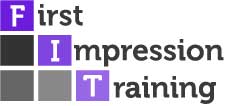The man, the myth, the legend. For many, Stretch Armstrong still brings back many happy childhood memories
Trying to see how far this large gel-filled, and quite frankly, tormented action figure would stretch was the name of the game. You only have to type Stretch Armstrong in on YouTube and you’ll find an array of videos of him being flushed down the toilet and burnt to a crisp on a BBQ.
But besides being the favourite victim to millions of Sid Phillips* doppelgangers, Mr Armstrong is a perfect metaphor to describe the current state of customer service. Allow me to explain…

One of the most common problems I come across with customer service is consistency. Despite the need to be consistent across every communication channel, most businesses are failing to deliver the same coherent customer experience.
Just recently, a friend of mine called up a garage to have their car serviced. When he asked for a price, they said it would cost £150.00 including VAT. However, when he received the invoice, it turned out that the quoted price didn’t include VAT. While paying an extra £30 may not feel like a vast amount, it does leave a sour taste in the mouth and has resulted in my friend taking their future business elsewhere.
Multiply this by ten or twenty people over the space of a year and you’re talking about thousands of pounds lost.
Sadly, this is just the tip of the iceberg. Customer service response times are a real issue today, with businesses unable to deliver the same experience across multiple channels…and this has been exasperated in recent months with the COVID-19 situation. In fact, Eptica’s latest Digital Customer Experience Study reveals that many businesses are spending greater resources on some channels and deserting others. For example, the fashion industry scored 84% on web responses and 60% on Facebook, but just 30% on email and 50% on Twitter.
To put this into perspective, fashion retailers take anywhere between 7 minutes to 1 hour & 4 minutes to respond via email, 3 minutes to 4 hours & 19 minutes on Twitter and 2 minutes to 1 hour & 59 minutes on Facebook.
The study also backs up my point about inconsistent messaging across different channels, with 38% of businesses guilty of providing different answers to customer queries on more than one channel. This indicates that there is a silo-based approach to customer service instead of an integrated omni-channel process where, metaphorically speaking, everyone is singing from the same hymn sheet EVEN if they are playing a different instrument or singing on a different channel or wavelength (see what I did there!?).
Today there are multiple touchpoints of interaction available between a business and customer. This is placing enormous pressure on businesses to use all of them and do so in a professional and competent way. However, this isn’t always possible when customer advisors and support teams are being pulled in every direction right now and from every angle. Amid the pandemic, where budgets are tight and staff numbers are low, with many on furlough, there’s a danger that many frontline teams are simply spreading themselves too thin.
Could you be one such team right now?
How are you expected to maintain excellent response times, provide consistent messaging and deliver a first-class customer experience, when you have a fraction of your usual resources (including your team) available to assume responsibility for the whole end-to-end customer journey? It simply is not possible.
Perhaps, now is the time to rethink your entire approach to Customer Service Excellence, by mapping out the value of your channels of communication. By trying to provide customer care across too many channels, you might be failing to provide the speedy quality service customers demand.
Interestingly, I recently stumbled across a report by the Corporate Executive Board stating that only 16% of customers are bothered about using a certain channel, while 84% are more concerned with finding a resolution to their issue. Netflix is a prime example. They realise they could not offer fast, first-class customer service to their customers via email, so they stopped offering it as a communications channel. Instead, Netflix has developed a robust-self-service help centre online, with easy access to a customer representative via chat or phone.
The point is your customers don’t care about the extent of your omni-channels. They care about the quality and consistency of your SERVICE.
So, if your business is feeling like a Stretch Armstrong at the moment, it might be time to give your arms a rest!
How about focusing your efforts on helping your frontline staff be the difference that makes the difference, by giving 100% attention and energy to communicating with your customers by fewer channels this week?
After all, there’s a reason why people still use the “quality over quantity” saying.
Until next time – stay flexible and keep FIT!
Best regs
Marie X
*Hello Curious George! Sid Phillips is the mad toy torturer in Toy Story


















